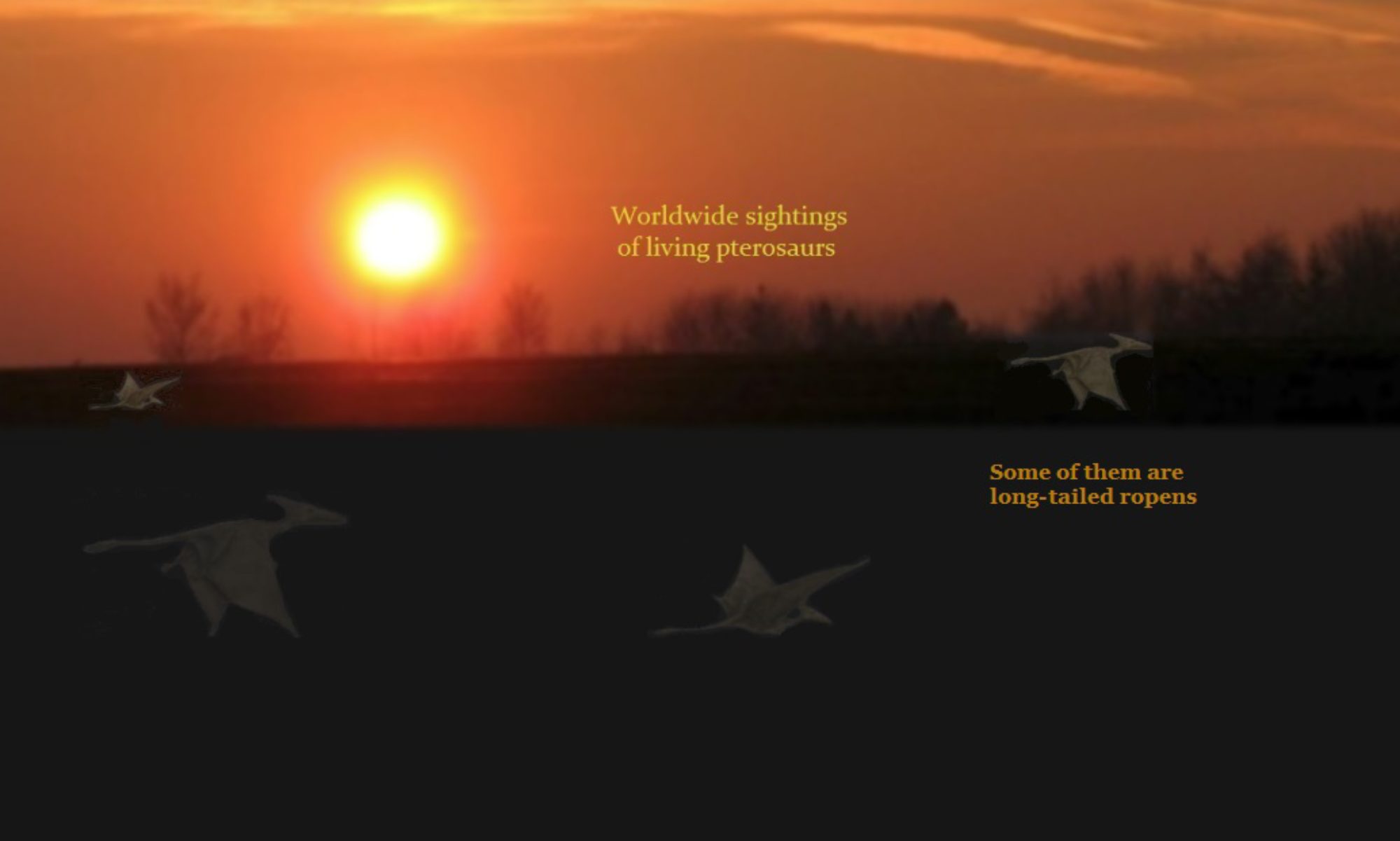Four Books by the Cryptozoologist Jonathan David Whitcomb
How high do you want to climb, in learning about these wonderful flying creatures that still sail through the clouds of our day? Whatever your ambitions may be in this branch of cryptozoology, one of the following books will satisfy your quest for discovery, unless your sights are focused on the top of the highest clouds: You’ll then want all four of these books.
Let’s begin with the greatest depth and breadth and price: $17.50 for the largest nonfiction book about non-extinct pterosaurs, SFRFG.
Searching for Ropens and Finding God, fourth edition
It begins with how and why the author caught hold of the sail that carried him to a remote tropical island in the southwest Pacific and what he discovered in villages of Umboi Island. Are you brave enough to fly with the author on these adventures that include what eyewitnesses have encountered worldwide?
Not only will you fly through the clouds of discovery, in this book, but you’ll see into the depth of controversy in Searching for Ropens and Finding God. As of February 28, 2018, not one of the Amazon customer reviews had anything other than the highest or lowest number of stars for this shocking publication.
In general, if you’re not offended by books that point to a divine origin of life on this planet, you’ll probably be delighted in the fourth edition of SRFRFG, although be aware: It’s not mainly about religion but is more a cross-genre of true-life adventure and cryptozoology.
In other words, if your personal philosophy includes the belief that traditional scientific assumptions in the Western world must never to be distrusted, even in the face of many worldwide testimonies by eyewitnesses, don’t buy this book. Otherwise you’ll probably love it.
$17.50 SRP
Paperback: 360 pages
ISBN-13: 978-1502865526
.
Live Pterosaurs in America, third edition
This book appears less controversial, according to the many high Amazon reviews, yet it’s filled with eyewitness reports of these shocking featherless flying creatures, as is Searching for Ropens and Finding God. Why is LPA rated higher than the larger book? It may appear less threatening to the popular dogmas about extinctions, so those who purchase it are the readers who are not offended by the idea that not all species of pterosaurs are extinct.
You’ll find no long introduction to adventures, in Live Pterosaurs in America, for it jumps right into a sighting in South Carolina, an encounter by the young college student Susan Wooten. Then travel across the United States, with one shocking encounter after another, all leading to the same conclusion: One or more species of pterosaurs are very much alive.
$13.65 SRP
Paperback: 154 pages
ISBN-13: 978-1466292116
.
The Girl who saw a Flying Dinosaur (new book)
Three of the four books here reviewed are in print format, and the newest and most compact is The Girl who saw a Flying Dinosaur. This short nonfiction is for the young reader: older kids and young teenagers.
Yet even in this short book, the importance of eyewitness testimony is emphasized. It encourages children and teens to think objectively about what eyewitnesses have reported about what they have seen.
On Amazon: $7.80 (maximum)
Paperback: 56 pages
ISBN-13: 978-1727778847
.
Live Pterosaurs in Australia and in Papua New Guinea
In contrast to the other three books, LPAPNG is available only online, and it’s in free pdf format. Yes, you can download this with no obligation or any filling out of any form, and it is for free.
It may not have the depth or breadth of Searching for Ropens and Finding God or Live Pterosaurs in America, but you’ll probably be delighted with Live Pterosaurs in Australia and in Papua New Guinea.
.
 The four dominant publications on modern living pterosaurs
The four dominant publications on modern living pterosaurs
For the cost of a meal for two at a nice restaurant, enjoy your own library of nonfiction books on these wonderful flying creatures: Buy all three of the ones in print and don’t forget to download the fourth one for free.
###
.
The “Bible of modern pterosaurs”
This examines several nonfiction books about living pterosaurs, including the largest one: Searching for Ropens and Finding God. The post is not in a common book-review format but divides the publications into types.
.
Live Pterosaurs in America (third edition)
Of the fourteen reviews published on Amazon, as of late February of 2018, 79% give it the highest number of stars, with one reader giving it almost that many. Even with all the controversy, this book is highly praised.
.
The Girl who saw a Flying Dinosaur
Many people, around the world, have seen a strange flying creature: something appearing unlike any bird, for it has no feathers. These animals are also unlike any bat, many of them having very long tails. Some eyewitnesses report a long beak, unlike any bat.
Live Pterosaurs in Australia and in Papua New Guinea
This is the download site for your free digital copy of the book.
.
Searching for Ropens and Finding God
The large fourth edition of this book, on Amazon





